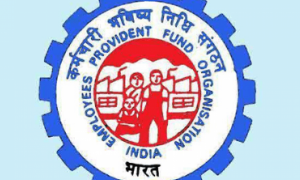As the board exam results are being announced, students are ready to transition from schools to colleges. The first step in this transition is to make a career choice. To help you in selecting the right professional path for you, every week we explore new professional avenues for you. Bring a unique career and a roadmap that can help you take up a job in that profession. If you have any other queries or have a course or career you want us to explore, write to us on Twitter at @News18dotcom.
One of the most significant improvements in the fashion industry has been the adoption of technology. Melding design education with science and technology fosters a professional approach toward technical aspects of clothing production and garment fabrication.
Aside from being a fashion designer, there are several lesser-known roles involved in the development of clothes before it is sold. Garment Technologist is one of these critical positions in ensuring the end product’s production proceeds properly. With the use of technology in garment production, it has advanced to a new level.
Garment technology is a vast subject since it incorporates a variety of separate technologies, each of which contributes uniquely to the creation of clothing. It is a discipline in which you learn about the various technical components of garment production.
Technology evaluations ranging from web 1.0 to new age technology web 4.0 are being employed widely in the present day across the country, causing a transformation in the Indian job market. The present trending technology in textile manufacturing indicates that the future of apparel manufacturing technology seems optimistic.
Machine learning, supply chain advancements, rapid data analytics, 3D capabilities, and bespoke production runs are five hot trending technologies in apparel manufacturing today.
The course in garment technology is intended for students who have never had any exposure on an industry level but wish to pursue a career in the technical field of fashion designing. After the successful completion of the course, students are in charge of the technical aspects of garment production.
ROLES AND RESPONSIBILITIES OF GARMENT TECHNOLOGIST
A garment technologist is someone who works on various stages of clothing development. From determining whether the design is feasible to selecting the best method for making the garment and may revise the design as needed due to practical constraints.
The garment technologist must also ensure that the correct techniques and machines are utilized in the manufacture of the garment. It is essential for them to keep costs in mind and devise the most cost-effective mix of materials and procedures for the clothing.
They have to be actively involved in identifying the best fabric and ensuring that production stays under budget. The garment technologist’s role is to provide suggestions, assistance, and variants. Along with ensuring that the clothing fits correctly and is of high quality.
A garment technologist handles every aspect of clothing production, including garment manufacturing, garment styling, operations, and maintenance. At the same time, it is critical for a garment technologist to be both innovative and skeptical.
Technologists work closely with the design team, pattern cutters, and customers. As the liaison between the brand and the manufacturer, the garment technologist is responsible for ensuring that the product’s vision is aligned and as expected. Overall, a garment technology specialist oversees the technical aspects of garment creation.
POTENTIAL GARMENT TECHNOLOGY COURSES
Garment Technology courses range from short-term certificate courses to high-level diploma, undergraduate and graduate programs such as B.Des., BSc, B.A., M.Des., and M.Sc.
Specializations available include Garment sewing, Garment Manufacturing, The History of Costumes, Fashion Designing, Science and Liberal arts, Fashion Styling, Design Management, Fashion Art and Sketching, Production of textile, Apparel Pattern Making, different types of Garment Knitting including Computerized aided knitting, Trends and Forecasting for Apparel, design process, production and planning, retailing and marketing, which are all covered in a Fashion Designing course.
PROGRESSION AND CAREER PATH
As the fashion industry continues to modernize and incorporate new technology, the demand for individuals in technical roles grows. As a result, the demand for garment technologists is expanding.
A garment technologist should study fashion design and development at an art college and get pattern-cutting experience. To accomplish the job successfully, you must understand body shapes, fabric performance, construction, and fundamental math.
After earning a qualification in fashion or textiles, you may be able to start as a garment technology assistant and then progress to become a technologist through on-the-job training.
You would undoubtedly ponder a career as a Garment Technologist if you enjoy machines, practical work, and technology.



































